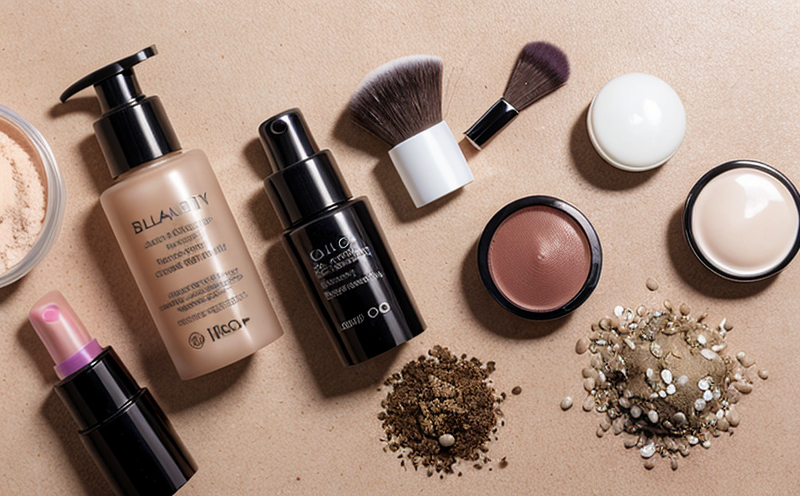Ready Biodegradation Testing of Surfactants in Cosmetics
The biodegradability of surfactants used in cosmetics is a critical parameter for ensuring environmental sustainability and compliance with regulatory standards. This testing service evaluates the extent to which these compounds can be broken down by microorganisms under controlled conditions, providing insights into their potential impact on aquatic ecosystems.
Surfactants are integral components of many cosmetic products, including shampoos, soaps, and body washes. They play a crucial role in cleansing, foaming, and emulsifying formulations. However, the presence of non-biodegradable surfactants can lead to long-term environmental pollution, as they may persist in waterways after disposal.
Ready biodegradation testing assesses how quickly and effectively a given surfactant can be degraded by microorganisms within a specific timeframe. This process typically involves inoculating the test sample with microbial cultures under laboratory conditions that simulate natural aquatic environments. The degradation is monitored over time, often using biochemical or spectroscopic methods.
The results of this testing are used to determine whether a surfactant meets biodegradability criteria set by regulatory bodies like ECOS (European Cosmetics Regulation) and REACH (Registration, Evaluation, Authorization, and Restriction of Chemicals). Compliance with these standards is essential for product safety and environmental responsibility.
Our laboratory employs advanced techniques such as the OECD 301A/B/C tests to conduct this assessment. These methods provide robust data on biodegradation potential, ensuring accurate evaluation. By offering this service, we help our clients ensure their products adhere to stringent environmental standards, enhancing both brand reputation and market competitiveness.
Understanding the biodegradability of surfactants is not only a regulatory requirement but also an ethical responsibility for the industry. Consumers are increasingly seeking environmentally friendly options, making it imperative for manufacturers to prioritize sustainable practices in product development.
Why It Matters
The significance of biodegradability testing cannot be overstated, especially within the cosmetics sector where environmental impact is a growing concern. Non-biodegradable surfactants can accumulate in water bodies, leading to harmful effects on aquatic life and ecosystems. This accumulation can disrupt natural processes, affecting biodiversity and potentially harming human health through secondary pollution.
Regulatory frameworks like ECOS and REACH emphasize the importance of biodegradability testing for cosmetic products. These regulations aim to reduce environmental footprints by promoting the use of eco-friendly ingredients that are readily biodegradable. By adhering to these standards, manufacturers not only comply with legal requirements but also contribute positively to global sustainability goals.
Beyond regulatory compliance, biodegradation testing plays a pivotal role in enhancing brand reputation and consumer trust. Consumers are becoming more environmentally conscious, seeking out products that align with their values. Companies that demonstrate commitment to sustainable practices through rigorous testing can build stronger customer loyalty and attract eco-conscious consumers.
Moreover, this testing supports continuous improvement in product formulations. By identifying non-biodegradable compounds early in the development process, manufacturers can innovate more responsibly, leading to better-performing products with reduced environmental impact.
Applied Standards
| Standard | Description |
|---|---|
| OECD 301A/B/C | The OECD guidelines are widely recognized for their robustness in assessing biodegradability. These tests involve inoculating a test sample with specific microbial cultures to observe its breakdown over time. |
| ECOS Regulation | This regulation mandates the biodegradability of surfactants used in cosmetic products to ensure they do not persist in the environment. |
| REACH Regulation | Under REACH, manufacturers must demonstrate that their ingredients meet stringent environmental criteria, including biodegradability. |
The OECD 301A/B/C tests are particularly important as they provide comprehensive data on the degradation of surfactants under different conditions. These tests help in assessing whether a compound can be effectively broken down by microorganisms within a specified timeframe, thereby determining its environmental impact.
ECOS and REACH regulations further enforce these standards, ensuring that cosmetic products contribute positively to environmental sustainability. By adhering to these guidelines, manufacturers not only comply with legal requirements but also enhance their brand's reputation for responsible practices.
Why Choose This Test
- Comprehensive assessment of surfactant biodegradability under controlled conditions.
- Meets stringent regulatory standards like ECOS and REACH, ensuring compliance with international norms.
- Promotes the use of eco-friendly ingredients that are readily biodegradable, contributing to sustainable practices.
- Enhances brand reputation by demonstrating commitment to environmental responsibility.
- Supports continuous product improvement through early identification of non-biodegradable compounds.
- Aids in regulatory compliance and market competitiveness for cosmetics manufacturers.
- Provides robust data that can be used for ongoing research and development efforts.
The ready biodegradation testing service offered by our laboratory is designed to address the specific needs of the cosmetics industry. By choosing this test, clients gain access to expert analysis that ensures their products meet high standards of environmental responsibility while maintaining product effectiveness and consumer satisfaction.





